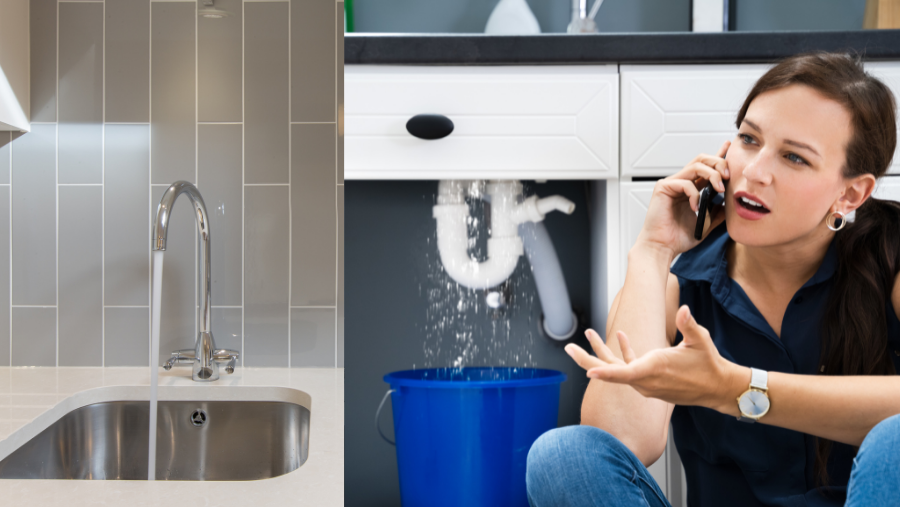Stopping Water Damage in the Bathroom
Stopping Water Damage in the Bathroom
Blog Article
Are you currently trying to locate help on How to Repair and Prevent Bathroom Water Damage?

The restroom is exceptionally at risk for moist build-up and potential water damage as a result of the regular use water in it. This article uses straightforward examination techniques to assist spotting water damages dangers.
The constant use water in the washroom makes it extremely at risk for wet accumulation and potential water damage. By inspecting it consistently, you can minimize water associated problems.
The complying with set of evaluations is simple to carry out as well as need to be done when in every three months in order to keep your shower room healthy as well as to avoid prospective water damages triggered by the tub, the shower, pipe joints and plumbing, sinks, cabinets, and the commode
Do not overlook carrying out these evaluations and be thorough while performing them. Remember that these simple inspections can conserve you a lot of money by offering early indications for water damages
Tub as well as Shower
The shower and bath tub require unique interest as well as maintenance. Examine the floor tiles as well as replace if cracked. Ensure that there is no missing cement in between the ceramic tiles. Examine and change split caulking at joints where the walls meet the flooring or the tub. Clogged drains pipes and pipes troubles will certainly stop the tub from drying and might show severe problems under the bath tub. Seek advice from a specialist right away to avoid structural damage. Take notice of discolorations or soft areas around the bathtub wall surfaces as they might suggest an internal leakage.
Plumbing
Signs for water damages are tough to find considering that most pipelines are installed inside the wall surfaces.
Pay unique attention to flooring and also walls moisture and also stains as they might suggest an invisible plumbing trouble. Inspect moisture levels in adjoining areas also.
Sinks and Cabinets
Sinks and also cupboards are exposed to dampness and moisture daily as well as are typically forgotten. Check consistently under the sink and on the counter top over it. Repair any kind of drip in the trap as it might suggest drainpipe troubles. Browse the sink, slow-moving draining pipes may suggest an obstructed drainpipe. Replace sink seals if they are split or loosened.
The Toilet
The toilet is a susceptible water joint. Examine the water lines and look for leakages around the commode seat, in the hose pipe, as well as under the water container. If you spot any signs of wetness on the flooring around the toilet, check for leaks in the toilet edge and also tank seals.
Be aware that hanging toilet bowl antiperspirants raises the chances for blockages.
Water Damage Signs In The Bathroom To Avoid Cleanup
Musty smell
This is one of the easiest signs to catch because musty smells are so odorous. The damp, earthy, moldy smell should be a big red flag. The smell will develop when moisture gets trapped in surfaces, and begins to facilitate mold growth. Leaking pipes under cabinets, inside walls, and behind shower fixtures will cause moisture to stay trapped and not dry, which will lead to mold growth and spread. As soon as you notice any musty smells in your bathroom, have it checked for hidden water damage and cleanup signs.
Visible mold
If the smell isn’t there to give it away, sometimes you will actually see mold growth. Finding mold in your bathroom is a serious problem, because mold is very harmful to your health. By the time mold growth is visible, it also means that water damage has already occurred and been present for some time. The only way the mold problem can be resolved is to find the source of the moisture and get it stopped. To safely and adequately remove mold, you need to have professionals handle the remediation. Do not waste any time in getting mold problems addressed, fixed, and sanitized so that you can protect you and your family from the many respiratory symptoms caused by mold exposure.
Damaged floors
Bathroom floors should be able to withstand some exposure to water while still remaining in good condition. However, when excess exposure or water leaks occur, they will begin to damage even the most water-resistant flooring. If you notice any cracking, bubbling, staining, or warping on your bathroom floors, there is probably a water leak somewhere causing the distortion. If you notice areas of the floor have become softer, or even have a spongy feeling, there is probably damage to the subfloor. Subflooring is typically made up of plywood. When plywood is exposed to water or moisture, it will absorb it. Once it has become saturated, the weight of the excess water will cause the wood to swell and soften. Check the floors in your bathroom frequently to catch any of these sings before they lead to damaged subflooring.
Changes on walls
When water leaks behind walls, it will cause changes in the drywall. Peeling plaster, blistering paint, and soggy wallpaper are all good indicators that excess water is building up behind the wall. Water leaking behind drywall will cause it to swell and be soft to the tough. If you start to notice gaps along the trim of your walls, or where tile meets the wall, it could also be a strong indicator that there is a leak behind the wall. Any changes, distortion, or damage on the walls should be evaluated as soon as you notice it to prevent further water damage and cleanup.

I have been very intrigued by Common Causes of Water Damage in a Bathroom and I hope you enjoyed our blog post. Do you know somebody else who is fascinated about How to Repair and Prevent Bathroom Water Damage? Take a moment to promote it. Many thanks for taking the time to read it.
Schedule Now! Report this page